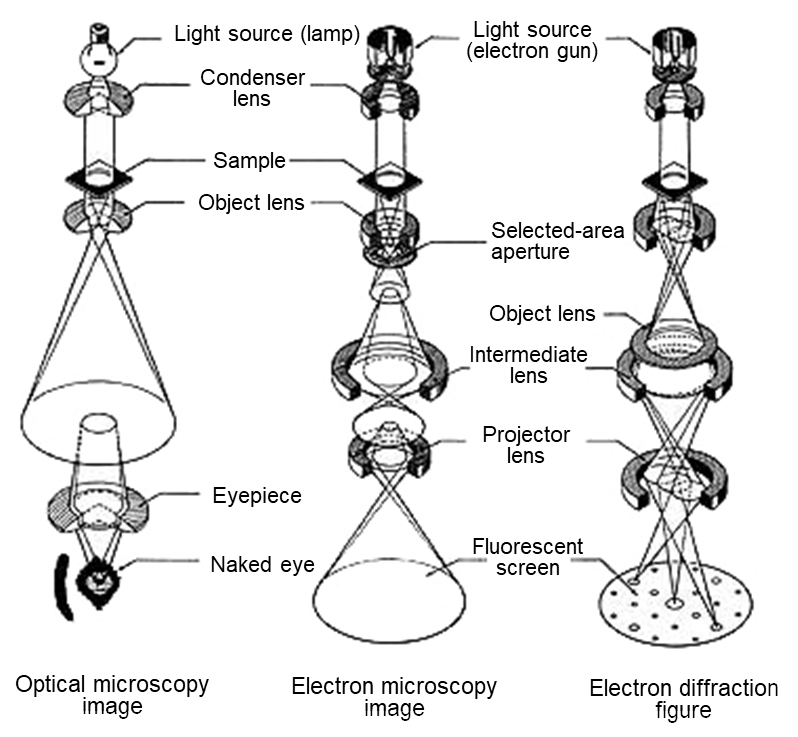Radioactivity and Air Dose Rate
(2020)
QHow can radioactive Cs in a solid phase material such as soil be analyzed?
AWe analyzed the properties of radioactive Cs using instruments based on different principles, depending on the purpose.
| Property | Geometry, elemental composition, and elemental distribution on the surface | Elemental distribution and isotopic composition on the extreme surface | Internal structure and elemental composition |
|---|---|---|---|
| Analytical instrument | Electron probe micro analyzer (EPMA) | Time-of-flight secondary-ion mass spectrometry (TOF-SIMS) | Transmission electron microscope (TEM) |
| Principle | An electron beam is applied on the surface of the sample to measure the ejected secondary electrons or transmitted X-ray. 
(Source:JEOL website) |
An ion beam is irradiated on the sample to analyze the resulting mass of ions (secondary ions) ejected from the surface of the sample. 
(Source : ULVAC-PHI brochure) |
An electron beam is irradiated on a thin-sliced sample to detect the transmitted electron beam. (Nanometer-scale objects can be observed.) 
(Source:JEOL website) |
| Example of analysis result |
|
|
|
Related articles
References
- 田籠久也, 土肥輝美, 石井康雄, 金井塚清一, 藤原健壮, 飯島和毅(2019): 環境試料中からの放射性セシウム微粒子の単離; リターへの適用事例, JAEA-Technology 2019-001, 37p. https://doi.org/10.11484/jaea-technology-2019-001
- Dohi, T., Iijima, K., Omura, Y., Fujiwara, K. and Kikuchi, N. (2017): Application of lichens to evaluate the distribution of radionuclides nearby the Fukushima Dai-ichi Nuclear Power Station, 14th International Conference on the Biogeochemistry of Trace Elements (ICOBTE 2017). Zurich.
- Hagiwara, H., Konishi, H., Nakanishi, T., Fujiwara, K., Iijima, K. and Kiatamura, A. (2020): Mineral composition characteristics of radiocesium sorbed and transported sediments within the Tomioka river basin in Fukushima Prefecture, Journal of Environmental Radioactivity, vol. 211, 106042_1-106042_10.
https://doi.org/10.1016/j.jenvrad.2019.106042
